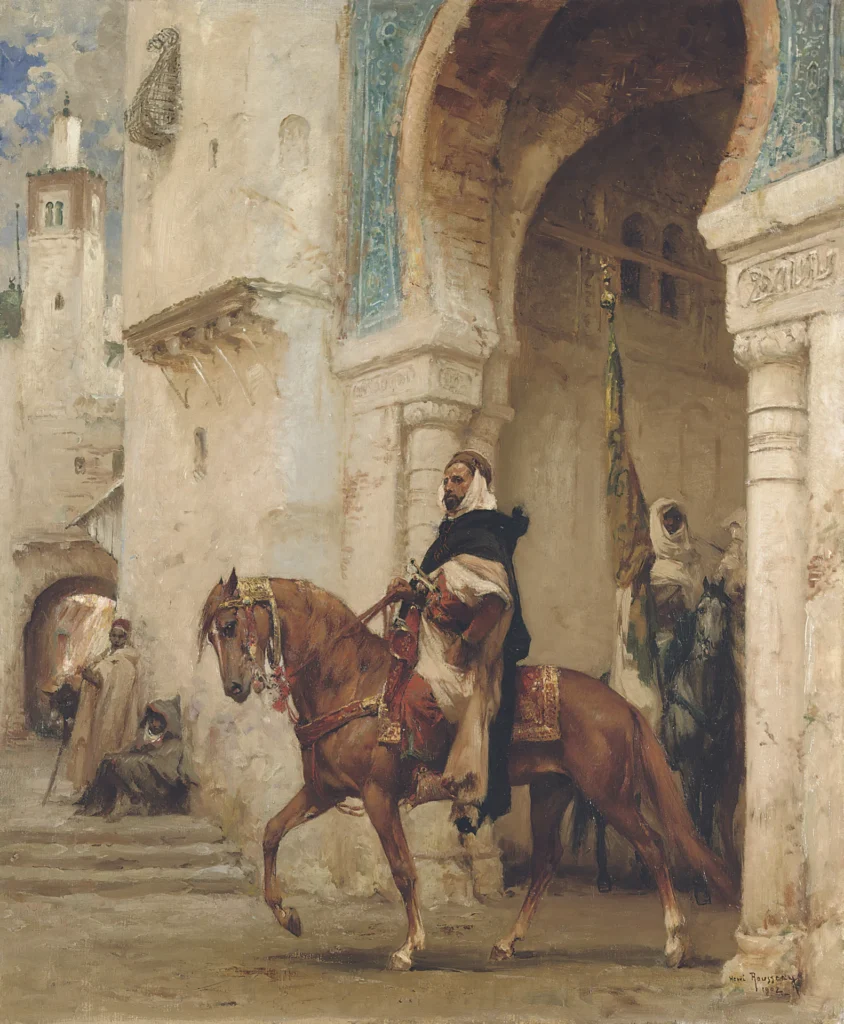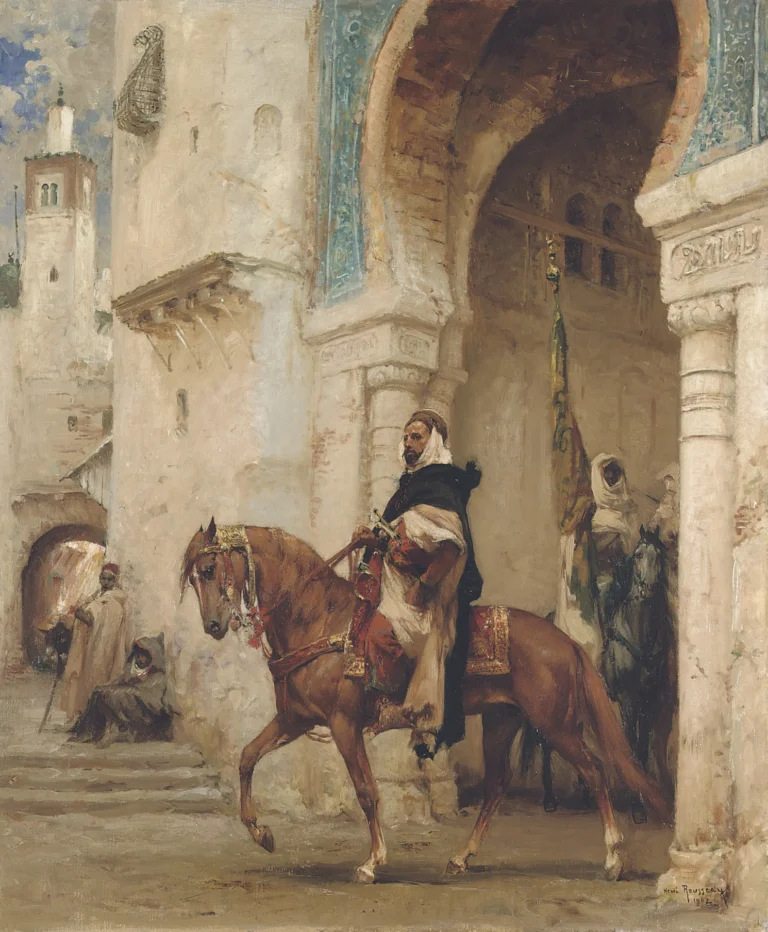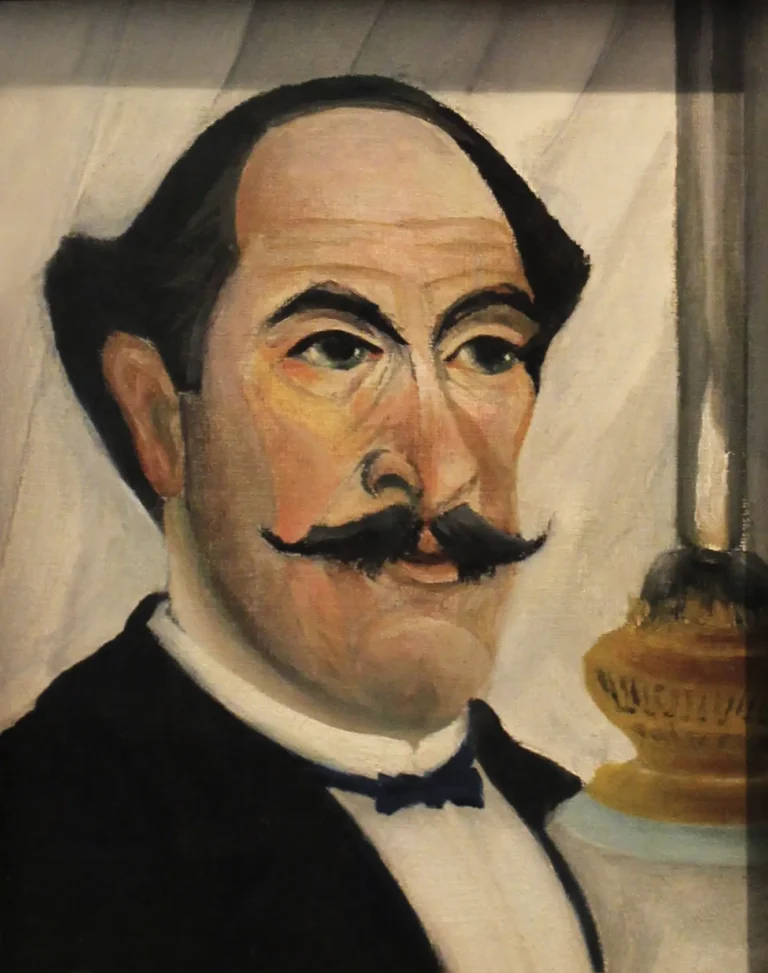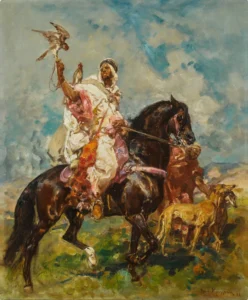Horseman Leaving A Palace (1902)
Created in 1902, Horseman Leaving A Palace is an oil on canvas painting by Henri Émilien Rousseau, a prominent French artist renowned for his Orientalist themes. The artwork measures 25¾ x 21¼ inches and showcases a captivating scene featuring a horseman, reflecting Rousseau’s fascination with Eastern cultures. With its detailed composition and vibrant colors, this piece transports viewers to a world of exotic elegance and adventure, encapsulating the essence of Rousseau's artistic vision.
Year 1902
About the Artwork
The creation of Horseman Leaving A Palace marked a significant moment in Henri Émilien Rousseau's exploration of Orientalism, a trend that captivated many artists during the late 19th and early 20th centuries. Rousseau, influenced by travels and studies of Eastern cultures, portrayed vibrant scenes that blended reality with imagination. This painting reflects his admiration for the grace of horses and the noble riders, encapsulating a fleeting moment of departure from grandeur. The documented provenance also traces its prestigious history, enhancing its appeal in the art market and establishing Rousseau as a noteworthy figure within the Orientalist movement.
Did You Know
Henri Émilien Rousseau’s works often embody the principles of Orientalism, showcasing Western interpretations of Eastern cultures through vibrant colors and dynamic compositions, a reflection of contemporary fascination.
Horses have long been a significant motif in art, symbolizing power, majesty, and freedom. Rousseau’s depictions honor this symbolism, connecting the noble steed with cultural narratives.
Rousseau is considered a pivotal figure within the Orientalist movement, influencing later generations of artists. His unique approach combined meticulous detail with an imaginative spirit, securing his place in art history.










